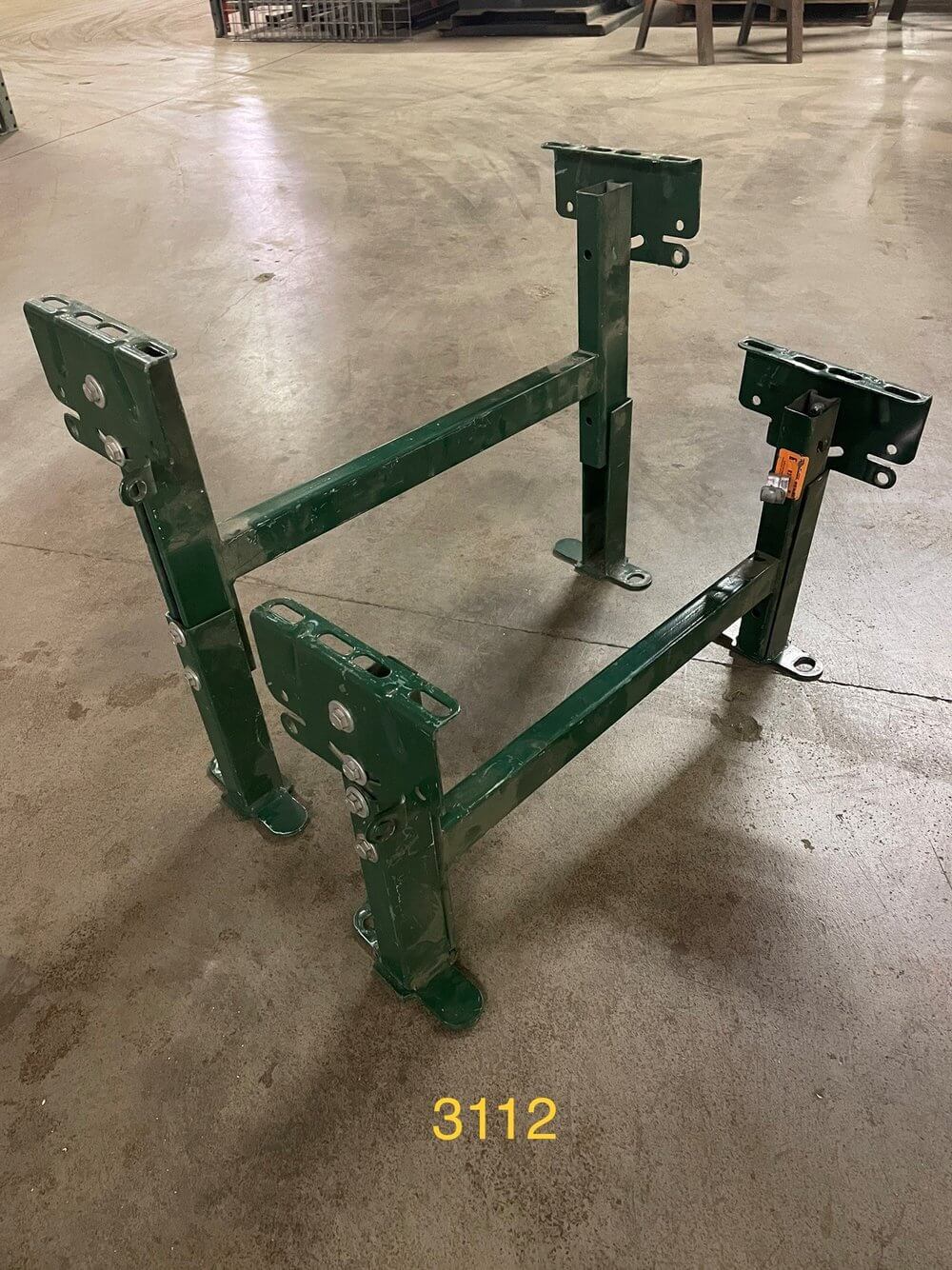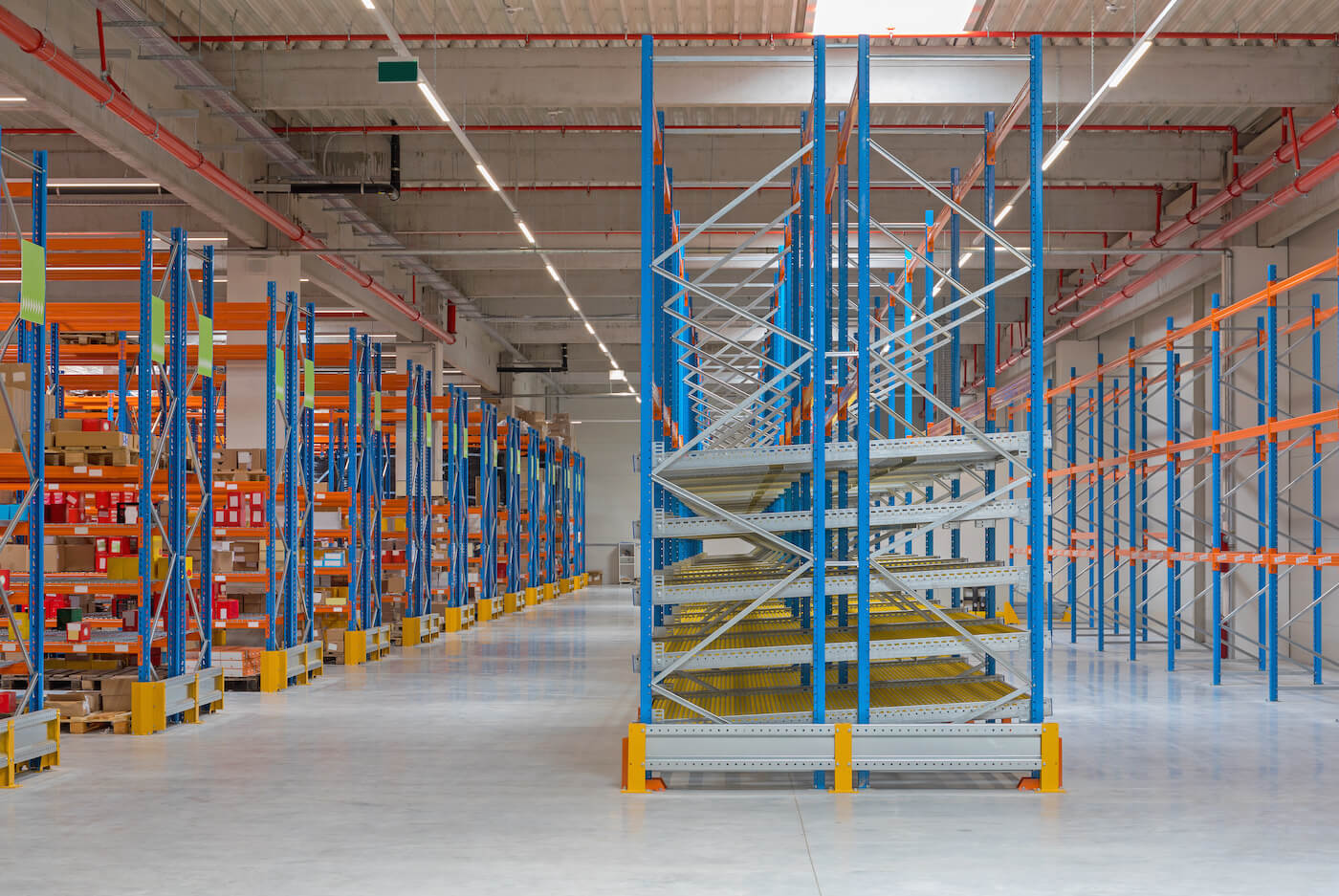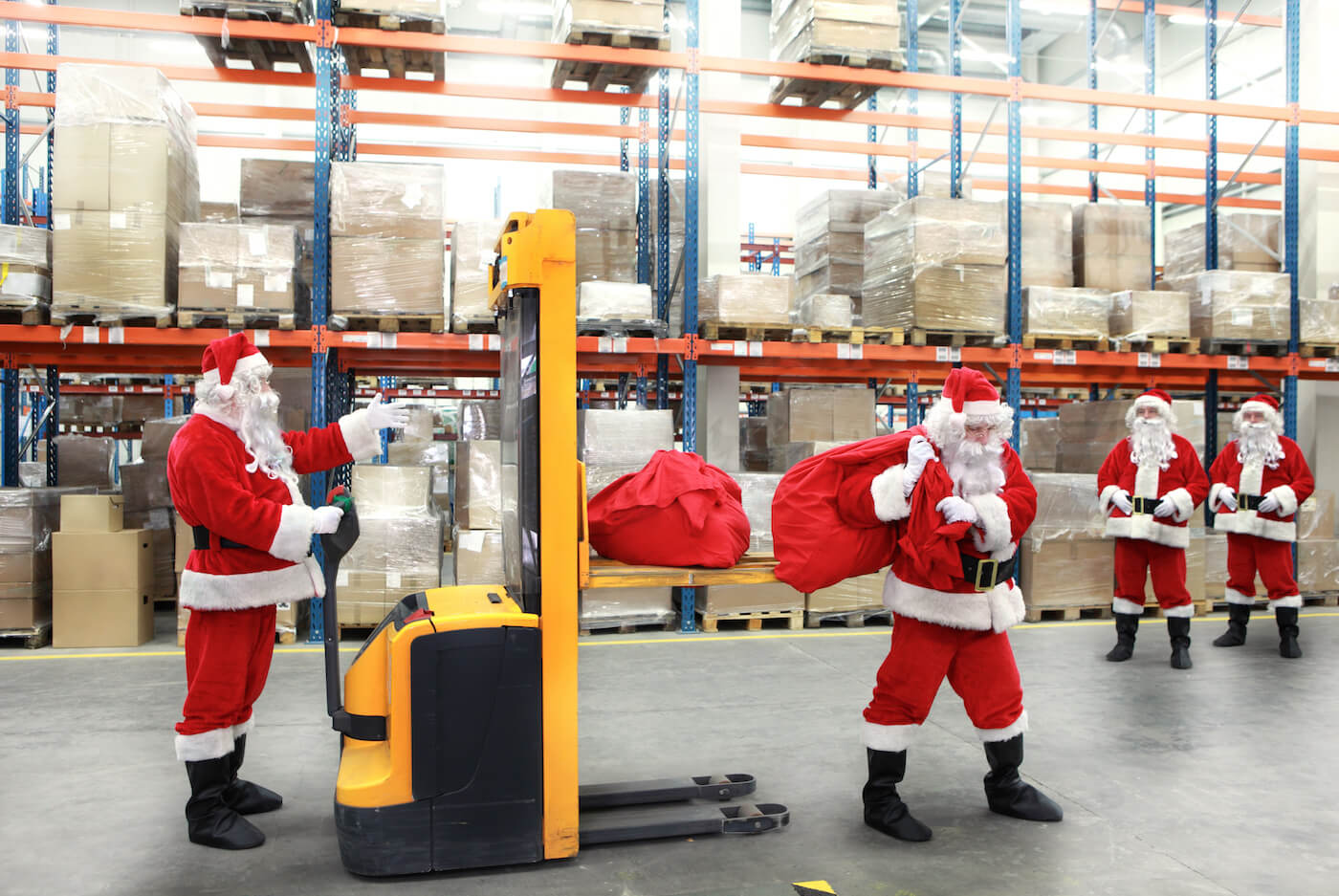Conveyor systems are widely used in warehouses, distribution centers, and material-handling operations to improve speed and efficiency when moving materials between different locations within a warehouse. In today’s high-demand world, being able to achieve that high level of efficiency and speed is crucial to the success of a warehouse business. Conveyor systems also allow for better integration between the existing systems in the warehouse, and may be used to connect different processes. There are many different types of conveyor systems for various applications. This guide covers gravity conveyors and how to get the most out of your gravity conveyor system.
What are Gravity Conveyors and How are They Used in Warehouses?
Gravity conveyors are a type of conveyor system that uses gravity to transport products between two locations. These conveyor systems usually have rollers or wheels built on a frame that help move the product down the line. Since they do not use power to run, they are more cost-efficient compared to powered conveyors.
Gravity conveyors can be installed in an incline or in a straight line; where the products are moved down the line by an employee. This makes them a great fit for employee work stations at assembly lines, and as part of a picking operation. They can also be used to move products between different levels and can be installed on a mezzanine.
There are different types of gravity conveyors that can be used to move different weights and shapes of products.
Different Types of Gravity Conveyors
Skatewheel Conveyor
Skatewheel conveyors have small, round wheels on the conveyor that are used to move products down the line. Items that have a smooth and even bottom can be moved easily on a skatewheel conveyor. The wheels are often made out of plastic and are lighter duty.
Gravity Roller Conveyor
Roller conveyors have rollers that help move the products. They are most commonly used to move cartons, pallets and packages over short distances. There are various sizes of rollers available for different applications. For heavier duty products, larger diameter rollers are used. A 1.5” diameter roller will work for most lighter-duty (under 100 lbs.) products.
Gravity rollers have more flexibility over what kind of items they can move. Items that have smooth and even bottoms are easily moved on a gravity roller as well as items with uneven bottoms or of uneven shapes. The rollers need to be longer than the size of the item they carry.
Expandable Gravity Conveyor
Expandable gravity conveyors give the user increased flexibility over the location and configuration of the conveyor. They are great for temporary use and applications that require mobility of the conveyor system. They also don’t require assembly and come in one piece, which makes the setup much easier. The legs of an expandable conveyor can be adjusted to different heights similar to other stands. The conveyor has swivel casters that can be used to move the conveyor to different locations. The expandable conveyor also has many set up options such as in a straight line, zigzag, or a circle.
Gravity Conveyor Parts and Installation
Most commonly, gravity conveyors have rollers or skatewheels built onto a platform held together by frames. The frames are most often made out of powder coated steel, although aluminum frames are also available for lighter-duty applications. Conveyors come in many widths and lengths, and some customizable options also exist. Most frames are modular and they can be added onto each other to create a longer conveyor. This gives you the flexibility to make changes to your configuration based on your future needs. Straight or curved configurations are also available for different warehouse layouts.
Conveyor stands are installed under the frames to support the conveyor system. The stand also helps connect multiple conveyor sections to create a longer line. Most stands are adjustable, which allows for installation at variable heights. Each conveyor section must be supported by stands; the number and spacing is determined by the weight of the products it carries. Bottom footplate bolts are also available to bolt the system into the floor for permanent use.
Conveyor Stand
Gravity Conveyor Accessories
Outside of the core parts that make up a gravity conveyor, there are additional accessories that can be added to get the most out of your system.
Side rails are an optional accessory used to prevent products from falling off of the conveyor.
Conveyor gates are a type of frame on hinges. These frames are installed at the end of another conveyor section and function the same way to move products. Their difference is that they can be lifted up like a gate to allow for employees to pass to the other side. The hinges on a conveyor gate allow for the entire frame to be lifted with ease, without having to uninstall any parts. Conveyor gates are especially beneficial for warehouses with limited space.
Plastic roller covers may be added to steel rollers to absorb shock and prevent fragile products from getting damaged.
Things to Consider when Designing a Gravity Conveyor System
When designing your warehouse, the most important thing to consider is that all of your different systems work together. To learn more about warehouse design read our informative guide, Designing a Warehouse Layout.
Gravity conveyor systems are relatively easy to design and install. They also give the user flexibility for modifications in the future, which is great if your business is growing and changing, or if your product lines are not consistent. Even so, it’s important to start off with a system that will work best for your current use and consider any potential future changes.
The shape and weight of the products you carry is one of the most important factors to consider. For example, if you deal with heavier products, you may want to select a conveyor system with larger diameter steel rollers.
The amount of space you have in your warehouse is very important as conveyor systems can be bulky. One space-saving option for gravity conveyor systems is that they can be installed on a mezzanine. There are also mobile options that may work well for small spaces.
Another thing to consider is the primary use of the conveyor system. Think about whether you will have employees pushing the products on a straight line or if the system will need to be installed at an incline. There is also additional warehouse equipment that can be used with a conveyor system to make your operation even more efficient.
For some warehouse operations, it can be beneficial to combine a powered conveyor system with a gravity conveyor. One of the benefits of this is the ability to slow down products at different points. For example, products can be moved on the powered conveyor in between employee stations and can be connected by a gravity conveyor while an employee is handling and working on them.
No matter what kind of design you select, the good news is that as long as you start off with an adjustable system, you can make changes to this configuration down the road.
Benefits of Gravity Conveyors
Gravity conveyors are a great fit for many different types of warehouse operations. Below are some benefits to help you decide whether they are a good fit for your business:
-
Gravity conveyors are amongst the most cost-efficient solutions in warehouses. The initial investment and maintenance costs are both lower than motorized conveyor systems.
-
Lack of any motorized parts makes gravity conveyors easier to install and maintain; resulting in lower labor costs.
-
Moving products on a conveyor is safer than using forklifts or other heavy machinery.
-
The rollers or wheels can be individually removed, cleaned, and replaced, instead of having to disassemble entire sections.
-
Gravity conveyors also reduce the likelihood of damage to products during transportation within the warehouse.
-
There are many length and width options that provide flexibility and customization options that can be modified at later times as the business evolves and changes
American Storage and Logistics Has All of your Gravity Conveyor Needs
Whether you’re setting up a new warehouse and designing a gravity conveyor system from scratch, or reconfiguring your existing system, American Storage & Logistics has the equipment you need to build cost-saving and efficient gravity conveyor systems. Our inventory is ready for same-day pickup or local next-day delivery. Click here to shop online today! If you have any questions about building a gravity conveyor system or about the different types of conveyors, give us a call at 616-246-9800 to speak with a sales engineer.






